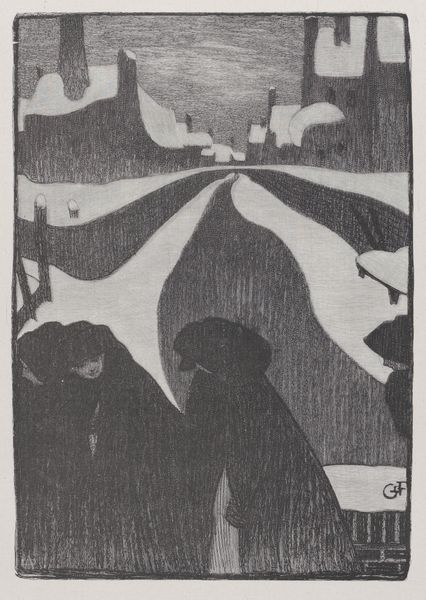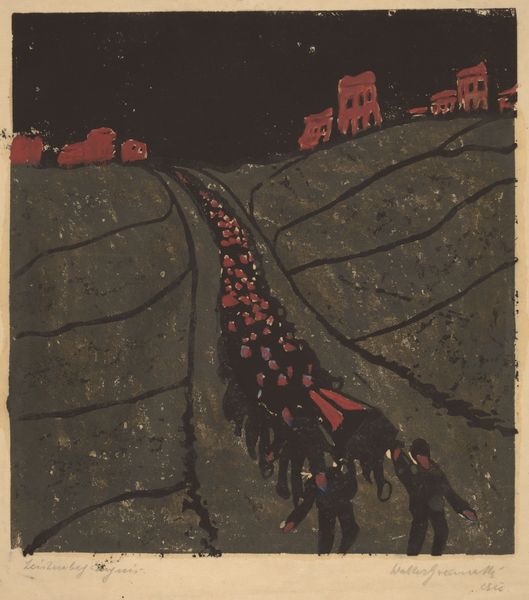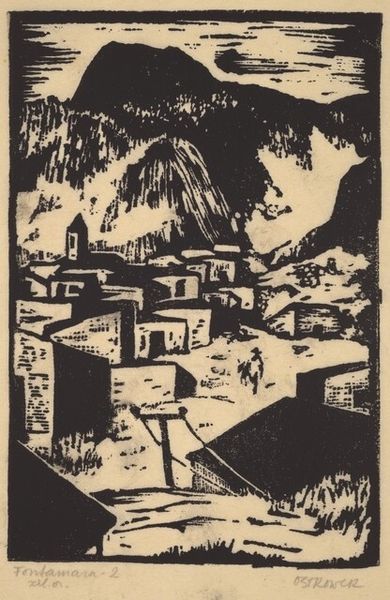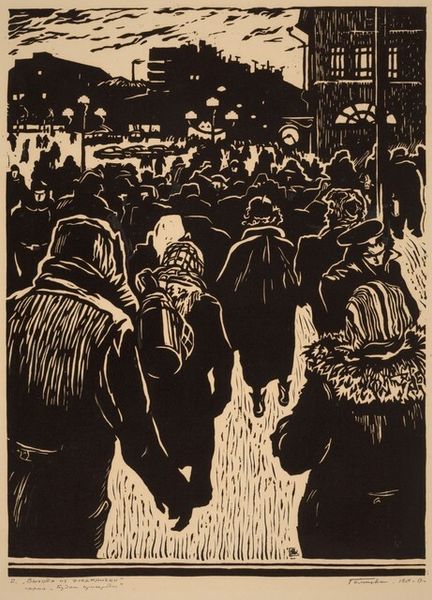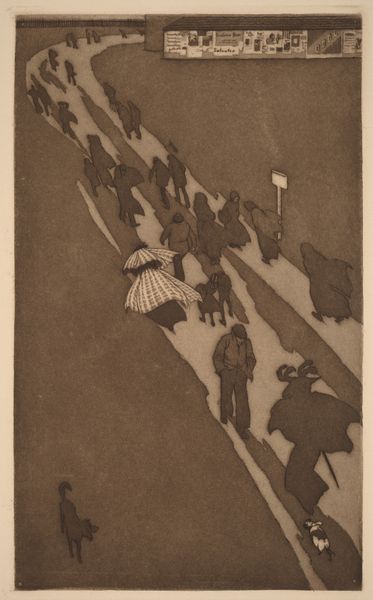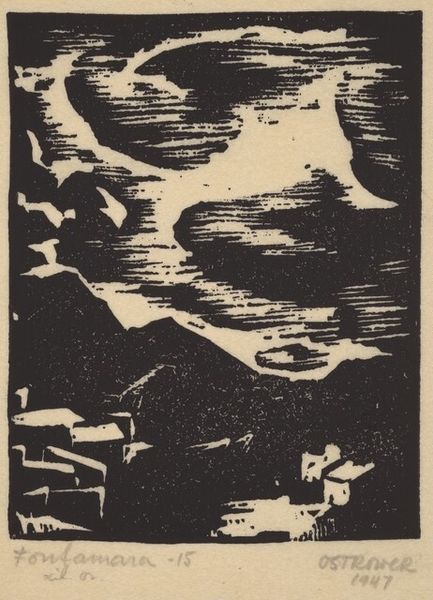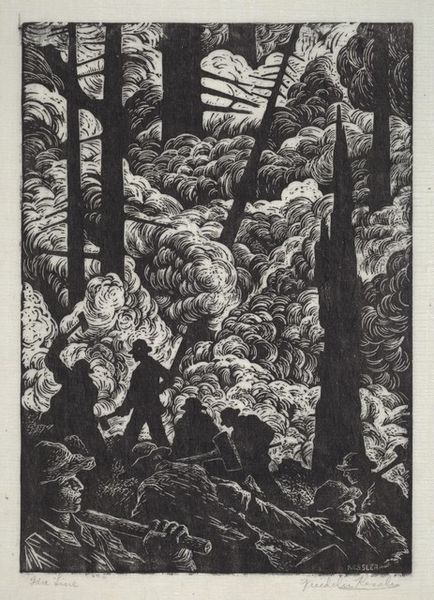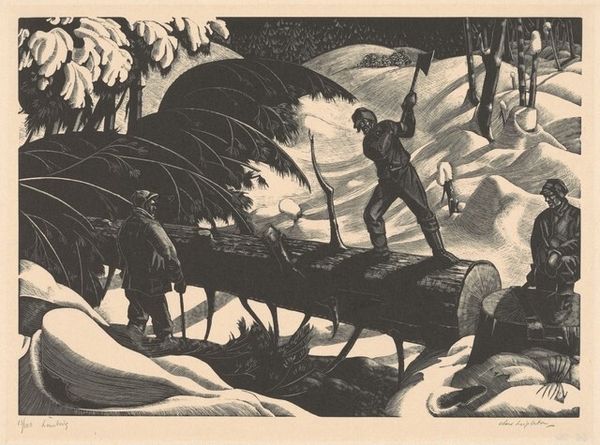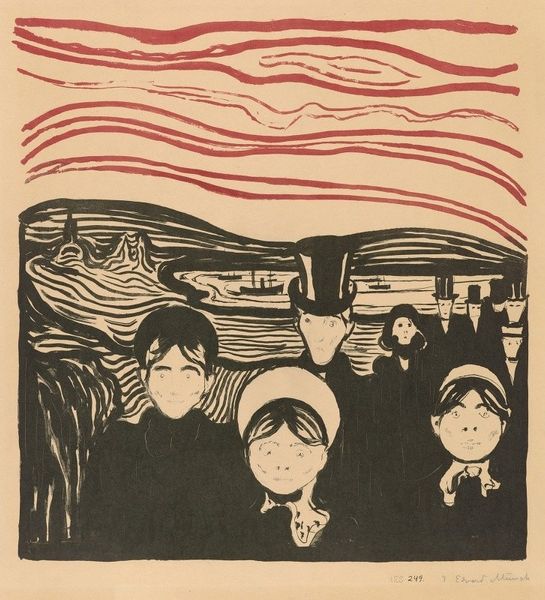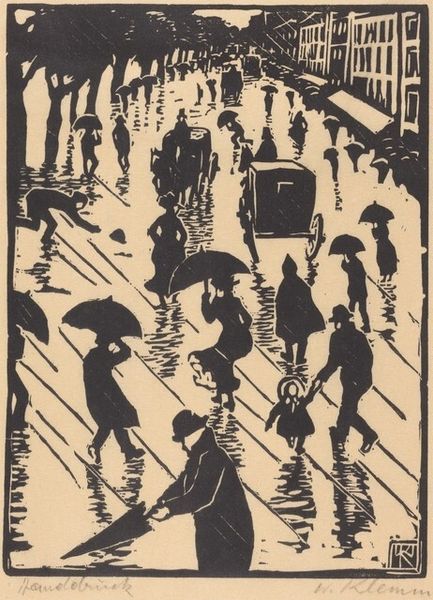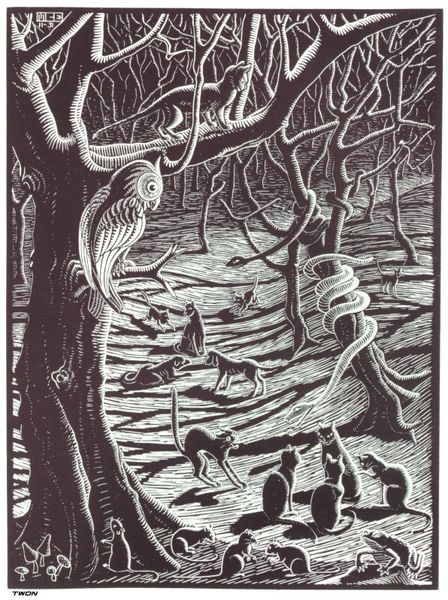
print, woodcut
#
narrative-art
# print
#
landscape
#
german-expressionism
#
figuration
#
expressionism
#
woodcut
Dimensions: image: 23.8 x 22 cm (9 3/8 x 8 11/16 in.) sheet: 37.1 x 32.3 cm (14 5/8 x 12 11/16 in.)
Copyright: National Gallery of Art: CC0 1.0
Curator: Walter Gramatté's woodcut, "The Burial," created in 1916, presents a striking example of German Expressionist printmaking. The stark contrast and the subject matter—a funeral procession winding its way through a snow-laden landscape—immediately seize attention. Editor: Gosh, the mood is somber, isn’t it? It looks bitterly cold too, like the ink itself is freezing. That dark procession trudging up towards those looming buildings gives me such a heavy feeling in my chest. It feels oppressive, somehow. Curator: The medium definitely enhances that. Woodcut as a printing method allowed for strong, graphic contrasts, fitting for the expression of raw emotion. The visible texture and labor-intensive nature emphasize the act of making itself. We can almost imagine Gramatté carving away at the wood, each mark a deliberate expression of grief. Editor: Yes, there is a kind of beauty in that raw physicality of the process. I wonder, what did it feel like for Gramatté, cutting away at this scene in wartime? The buildings are so abstracted; are they representative of anything, do you think? I imagine the sharp edges, those white gashes, might echo the feelings surrounding loss or trauma in some way. Curator: Possibly. The date is significant, after all. Created during the height of the First World War, its somber tones reflect the collective grief and anxieties of the era. The dehumanized depiction of the crowd could be seen as a statement on the impact of conflict, where the individual becomes part of an anonymous mass facing endless loss. Editor: And how poignant that this march is heading toward the city on the horizon. In a way, they are marching into the jaws of modern life and the industrialized, detached version of life that entails. Is it life? The stark palette adds so much weight. I am so curious as to whom they are burying… themselves? What an image. Curator: Indeed. It is a layered work that really shows you can interpret art based on its making, or see the image itself as representative of many other concepts. The way it brings us face-to-face with raw materials and the societal conditions, the human hand at work on conveying emotion... it’s a deeply engaging, visceral image. Editor: Yes. What a world it makes you think about. Such an excellent image. Thank you!
Comments
No comments
Be the first to comment and join the conversation on the ultimate creative platform.
